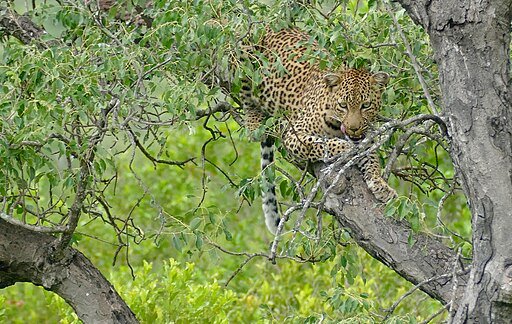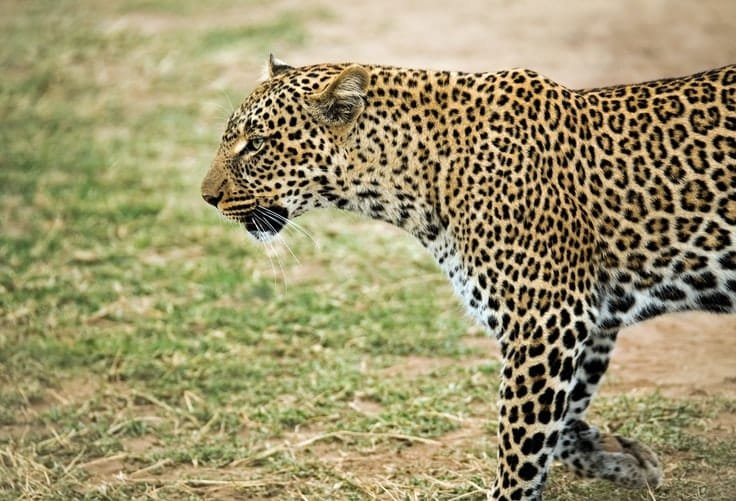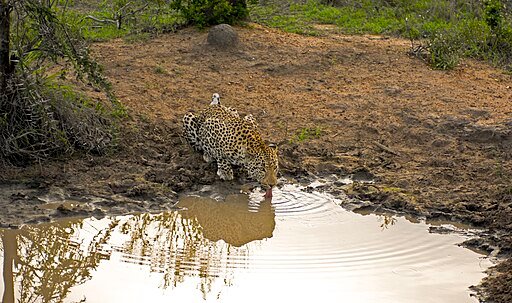Leopards are widely regarded as ultimate survivalists due to their exceptional adaptability to various environments. These big cats thrive in a range of habitats, from dense forests and swamps to arid deserts and mountain ranges. Their ability to adjust to different ecological settings is a testament to their evolutionary success, making them one of the most versatile and widespread felines in the world.
Solitary and Secretive Nature

Unlike many other big cats that prefer group living, leopards are predominantly solitary creatures. This lifestyle allows them to become masters of stealth and secrecy, reducing the likelihood of detection by both prey and potential threats. Their elusive nature makes them challenging to study but also contributes to their survival in areas where they could be at risk from human activity.
Master of Camouflage

The leopard’s distinctive spotted coat is not just for show; it is a highly effective form of camouflage. The rosette patterns break up the outline of their body, allowing them to blend seamlessly into their surroundings. This advantage is crucial for both stalking prey and avoiding confrontations with other predators, cementing their role as silent hunters.
Versatile Diet

Leopards possess a remarkably versatile diet, which is key to their survival. They are opportunistic feeders, preying on a wide range of animals, from small rodents to larger ungulates. This dietary flexibility means they can adjust to changing food availability, ensuring they seldom go hungry in various environments.
Keen Senses

The leopard’s acute senses play a vital role in its survival toolkit. Their vision is incredibly sharp, especially during the night, which aids in hunting under the cover of darkness. Their keen sense of hearing allows them to detect prey movements from a distance, while their sense of smell helps them locate carrion when fresh prey is scarce.
Powerful and Agile Physique

Leopards possess remarkable physical capabilities, characterized by their strength and agility. They are capable climbers, often hoisting their kills into trees to protect them from scavengers. This physical prowess is vital for both hunting and evading larger predators, ensuring their continued survival in competitive landscapes.
Resourceful Reproduction Strategies

Leopard females demonstrate resourcefulness in raising their young, often choosing hidden and secure locations for denning. They are attentive mothers, teaching their cubs essential survival skills. This strategic approach to reproduction ensures that a higher number of cubs reach maturity, sustaining the population despite potential threats.
Adaptation to Climate Variations

Leopards are adept at coping with climatic variations, from the freezing conditions of the Russian Far East to the hot, arid scrublands of Africa. Their fur density can adapt to temperature changes, providing insulation against cold weather or allowing them to remain cool in scorching environments, further demonstrating their survival adaptability.
Coexistence with Humans

While human encroachment poses significant threats to many wildlife species, leopards have shown a surprising ability to coexist with people. They often inhabit areas close to human settlements and even adapt their behavior to avoid detection. This coexistence, however, is fragile and requires careful conservation efforts to maintain balance.
Conservation Challenges and Efforts

Despite their adaptability, leopards face numerous conservation challenges, primarily due to habitat loss and poaching. Conservation efforts are increasingly focused on understanding leopard ecology and behavior to implement effective protection measures. Education and community involvement are crucial to ensure their future survival, highlighting the need for global awareness about their plight.
Conclusion: The Resilience of Leopards

In conclusion, leopards exemplify the concept of survival against the odds. Their adaptability, versatile hunting skills, and intriguing behaviors underline their status as ultimate survivalists. While they face ongoing challenges, their resilience offers hope for the future, underscoring the importance of conservation initiatives to protect these magnificent creatures for generations to come.






